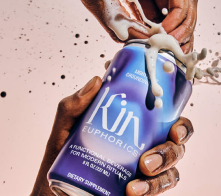Customer retention is vital for brands looking to grow their e-commerce business and cultivate loyal followers. On both Amazon and your own website, implementing strategies to boost repeat purchases from existing customers can significantly impact your bottom line.
From personalized promotions to optimizing your product catalog, here are 7 proven strategies to improve customer retention on Amazon and your website:
1. Personalized Promotions:
On Amazon, tailor promotions for recent, high-spending, and repeat customers. On your website, extend loyalty discounts to your valued customers, ensuring consistency across platforms.
2. Smart Subscription Strategy:
Offer "subscribe & save" coupons to entice customers into regular purchasing habits. The initial discount pays off through increased customer spending over time. This can work on Amazon and your website.
3. Strategic Retargeting:
Utilize a Demand-Side Platform (DSP) for retargeting campaigns, especially for dormant customers. On Amazon, the levers on DSP allow for this granularity while also allowing for the exclusion of subscribe & save customers.
4.Product Journey Insight:
Some products lead customers to buy more products from your brand, others not so much. Identify gateway products that drive repeat sales by analyzing the LTV data of your catalog as a whole. From there, direct your marketing dollars to the SKUs that give you the most bang for the buck.
5. Boost Engagement with Social Posts:
Leverage Amazon and social media posts to build brand followership. Heightened touch-points amplify customer engagement and strengthen brand loyalty. Amazon Posts is free-to-use, and its "Follow" feature builds a connection, ensuring more frequent interactions for sustained retention.
6. Dual Approach Re-engagement:
Combine customer engagement emails (Amazon) and past purchase history (website) for a potent re-engagement strategy. Hit them with the one-two punch, DSP retargeting & email combo for a sure way to drive that re-engagement.
7. Ensure Product Excellence:
Make sure the products you are selling are top quality. High-quality products meet and exceed customer expectations, fostering trust and loyalty, which are essential for long-term retention. When customers consistently receive value, they are more likely to remain loyal, make repeat purchases, and advocate for the brand, solidifying the link between product quality and sustained customer relationships.
By focusing on winning back loyal customers and incentivizing repeated purchases across platforms, you can maximize customer lifetime value while minimizing acquisition costs.
Consult with an agency like Envision Horizons to develop data-driven retention strategies tailored to your brand and products. As a leader in optimizing Amazon and e-commerce success, they're dedicated to elevating your brand's retention efforts. Request a free Amazon growth plan from experts at www.envisionhorizons.com.
Nothing stirs fear in the hearts of eCommerce marketing teams quite like a new Apple privacy announcement. And their most recent edicts concerning link-tracking changes in iOS17 are no exception.
The privacy landscape is constantly changing, and we’re all evolving in stride. Let’s walk through some of these changes, whether or not they’ll affect you, and what Retention.com is doing to stay ahead of them.
What’s Changing?
According to Apple’s recent announcement, Link Tracking Protection is likely to be enabled by default in Apple’s Mail app, Messages, and Safari's Private Browsing mode.
As with most new iOS changes, we expect that this will roll out in September or early October when the new iOS is usually released to general consumers. Fortunately, it often takes a couple of months for wide adoption of the new iOS.
What will Link Tracking Protection Do?
Link Tracking Protection aims to strip certain query parameters from URLs in Apple Mail, Safari Private Browsing Mode, and Messages.
What are query parameters? They can include:
- Social: ?utm_source=facebook&utm_medium=social
- Facebook: ?fbclid=99999
- Google Ads: ?gclid=8888aaaa
- Impact Radius: ?irclickid=999aaa
- Klaviyo ?kx=7777
- And more…
First things first, this will not impact your regular social utm codes (utm_source, utm_medium, etc). Nor will it strip Impact Radius or Klaviyo query params, or even custom utm parameters.
This is good news.
What’s The Worst Case Scenario?
So, what will be affected?: The parameters added by Google and Facebook: fbclid and gclid.
This will hurt Google Analytics’ ability to track your Google Ads, Meta’s ability to track Facebook Ads, and Facebook’s Conversion API.
Yikes? Actually, not so scary. Remember, Link Tracking Protection is only happening in Apple Mail, Messages, and Safari Private Browsing mode. Most shoppers do not use Safari Private Browsing mode, the only place where Google Search Ads should be affected. And most Facebook shoppers shop directly through the Facebook Native App.
In short, we expect that this won’t really affect most of your tracking.
Then comes Apple Mail, which has around a 50% market penetration rate. This is where you’re likely to lose Google and Facebook attribution parameters (gclid and fbclid). Your other parameters should still work.
Let’s talk about what this really means. Losing fbclid and gclid parameters in emails received through Apple Mail (or through Messages/Safari Private Browsing) can cause some headaches for you, such as:
- Broken attribution
- Broken conversion tracking
- Reduced marketing and targeting efficiency
- Trouble setting cookies for event/conversion hits
Wait, broken things?
Well, as mentioned above, this really only impacts gclid and fbclid attribution via Google Analytics, Facebook Conversion API, and Meta ad tracking, and only in this one channel. All your other attribution methods should still be fine.
Here’s a reminder of what’s not going away (at least not yet, as far as we can tell):
- Klaviyo, TikTok click iD parameters
- Link tracking in browsers like Chrome or Firefox
- Link tracking in regular Safari browsing mode
- The standard 5 UTM parameters (utm_source, umt_medium)
- Custom UTM parameters (utm_term, utm_content, etc)
The result? This really won’t affect that much of your attribution.
What Should eCommerce Brands Do About This?
Since we have time to adapt before the changes really take hold, let’s be pragmatic about it:
First, consider your channels - Remember that only some link tracking parameters will be affected in only some channels, and most people won’t be shopping through those channels.
Second, consider your attribution tracking - Are you wholly reliant on Google Analytics/Facebook to track your performance, and are you only using Google Ads? There’s no time like the present to consider alternative options.
Third, lean in to attribution methods that are not being affected. Make sure you’re exercising everything at your disposal to track the customer journey and maintain that valuable attribution.
Will This Affect Retention.com’s Product?
Nope.
This change shouldn’t have a noticeable impact on our current product suite. Social advertising attribution tracking from an email click is a small pool to begin with – and when the specificity of in-private browsing is added, the pool gets even smaller.
Retention.com will still serve you up with plenty of net-new, high-intent customers that you otherwise would be losing, and you’ll still be able to market to them using your existing marketing automation tools with all of your regular attribution methods. No changes there.
While these announcements can seem scary, rest assured that our team of seasoned eCommerce and agency experts is staying way out ahead of the curve.
Want to talk more?
In the dynamic world of digital marketing, effective audience retargeting is a crucial strategy for businesses aiming to maximize their online advertising efforts. Retargeting allows brands to reconnect with users who have shown interest in their products or services, providing a higher probability of conversions. To accomplish this, leveraging both third-party and first-party data is essential. In this blog post, we will delve into the importance of combining these two data sources and explore how their synergy can amplify retargeting efforts, drive engagement, and boost overall marketing success.
Understanding Third-Party and First-Party Data:
Before delving into the benefits of combining third-party and first-party data, it's essential to grasp their distinct characteristics.
Third-party data refers to information collected by external entities unrelated to your brand. These sources can include data aggregators, publishers, and other companies that track user behavior across various platforms. Third-party data offers broad insights into consumer preferences, interests, and demographics, making it a valuable resource for targeting specific audience segments.
On the other hand, first-party data is generated directly from interactions between your brand and your customers. This data is typically collected through website analytics, customer relationship management (CRM) systems, email marketing platforms, and other owned channels. First-party data provides a deeper understanding of individual user behavior, preferences, and purchase history, allowing for highly personalized retargeting campaigns.
The Synergy of Third-Party and First-Party Data:
1. Comprehensive Audience Insights
By combining third-party and first-party data, businesses can access a holistic view of their target audience. Third-party data adds depth to the understanding of customer segments by providing broader demographic and interest-based insights. Meanwhile, first-party data offers granular details about individual user behaviours, enabling brands to create highly personalized retargeting campaigns.
2. Enhanced Audience Targeting:
Integrating third-party and first-party data enables brands to refine their audience targeting strategies. Third-party data allows businesses to discover new potential customers and expand their reach, while first-party data enables precise targeting of existing customers and prospects who have already shown interest. By combining these two data sources, brands can create highly relevant and targeted ad campaigns that resonate with their audiences, increasing the chances of conversion.
3. Improved Campaign Performance:
The synergy between third-party and first-party data can significantly enhance campaign performance. Third-party data provides valuable insights that help identify high-value customer segments, while first-party data enables personalized messaging and tailored offers. By leveraging both data sources, businesses can optimize ad delivery, create compelling content, and improve campaign efficiency, resulting in higher engagement and conversion rates.
4. Customized Customer Journeys:
When third-party and first-party data are used in tandem, brands gain the ability to create customized customer journeys. By understanding customer preferences, interests, and behaviors from first-party data, businesses can identify touch-points where retargeting efforts can be most effective. Third-party data then enhances this personalization by providing additional context and insights into customer behavior outside of the brand's owned channels, enabling the delivery of relevant messages at the right time and on the right platform.
Conclusion
In the realm of audience retargeting, the combination of third-party and first-party data is a winning formula for success. By leveraging both data sources, businesses can create powerful, personalized campaigns that resonate with their target audience, enhance engagement, and drive conversions. The comprehensive insights obtained through third-party data, when combined with the granular details of first-party data, enable brands to optimize their retargeting efforts, deliver highly relevant messages, and build long-term customer relationships. In the ever-evolving landscape of digital marketing, harnessing the power of both third-party and first-party data.
Not all emails are created equal. That’s why different companies have such a range of open and click-through rates. Abandoned cart emails are no different. To ensure yours is going to bring you the best results and get that contact back to their cart, incorporate these best practices into your abandoned cart email strategy. Which of course should be part of your overall retention marketing strategy.
With that, let's get started!

Subject lines
This is the first thing users will see when you send them an abandoned cart email, so don't disappoint. Nearly half of all email recipients say they open an email based on the subject line. So, what should you say to get the open?
The best approach is to keep your subject line simple and to the point. Let them know exactly why they are receiving this message. Consumers receive hundreds of emails a day, so cut to the chase.
Not sure what to include in your subject line? Try some of these components:
- Company name: Let them know who is contacting them.
- Customer name: Email personalization may help you get more opens.
- Friendly tone: If you can’t imagine saying it to a friend in normal conversation, rephrase your subject line.
- Product details: What exactly did they leave in their cart? Remind them.
- Urgency: If they might lose the items in their cart, let them know.
- Simplicity: Because the decision to open your email is made within seconds
Here are more than 10 examples of subject lines that work:
- Cart reserved: Open to see
- Don’t miss out! Your cart is expiring soon
- Empty your cart with 25% off
- Take 10 percent off before your cart is gone
- Still deciding? Your [PRODUCT] is waiting!
- Did you forget about me?
- [CUSTOMER NAME], did you forget something?
- Oops, you forgot something
- Where’d you go?!
- A gentle reminder…
- Your cart is expiring. You may qualify for free shipping
- There’s something in your cart
- Thinking about [PRODUCT]?
- Did you forget about me, [NAME]?

- Your cart MADE us send this reminder

- Is your wi-fi ok?
Adding personalized information, like the shopper’s name or the item they left in their cart, will better catch their attention and clearly state this email is just for them.
Create a sense of urgency
Alerting potential customers they might lose the items they’ve placed in their carts is a great way to tap into the scarcity effect as a marketing tactic, as long as you’re being honest.
You can do that by incorporating one of these tactics into your email:
- Reserve their cart for a limited amount of time (with a countdown)
- If their item is limited edition, let the know it won’t be restocked
- Set an alert showing how many other people have the item in their cart (similar to how travel sites tell you how many people have viewed that property in the past 24 hours)
- Let people know if their item is likely to sell out due to popularity
This email from Google is a great example of creating urgency:

From the headline, “Going, going, (almost) gone,” to the content saying their popular items sell out fast, this cart abandonment email is all about creating a sense of urgency. The email is short and to the point, which is a definite must for this type of message.
They also include the company’s contact information, which consumers could use if they had any questions or issues. That’s great to include in case the original reason they didn’t make the purchase was because of an issue or question.
Content
If your subject line does the trick, your potential customer will have made their way into the email body. Yay! Now that they are there, you’ll want to make sure your content makes these three points:
- They liked something enough to put it in their basket
- It was left in their online shopping cart
- They should return and complete their purchase
Everything you should include in your email is a means to that end. Basic elements to include in the email that will help you reach that goal include:
- Shopper’s name (if you know it)
- Sentence reminding them they haven’t completed their purchase yet
- Details about what they left in their cart
Your brand’s personality needs to shine through with every piece of marketing content, including your cart abandonment emails. That allows you to recover sales by being distinctive in a cluttered inbox.
This is a great example from Columbia:

Showcase product
The reason for your abandoned cart email is to get that shopper back to their cart to complete the purchase. One major part of doing that is showing them exactly what they’ve left behind.
- Don’t hide that information: Reveal that product like it’s on the Price is Right.

Using a large product image can turn a good abandoned cart email into a great one. Your abandoned cart email should be designed to reignite your customer’s excitement. There’s a reason the shopper added the item to the cart in the first place, so remind them of that.
People might not remember what products had them clicking the “add to cart” button in the first place. If they open your email and are still confused, they’re probably going to delete the email, and you’ve lost a potential sale. So, make the product image the main event.
Similar offerings
Maybe they didn’t complete the purchase because the product wasn’t the best one for them. To combat that issue, you can (sometimes) include an alternative product to the one in their cart. We say “sometimes” here because you might not want to do that with every abandonment email, since that could take away from the main one they really do want. They did add it to their cart, after all.
You could send them an email with the product in their cart as the main image. Then, include two or three similar product photos (with links) below that, in case one of those better catches their eye.
This approach is similar to what you see on Amazon’s “Customers who viewed this item also viewed” section:

Or, you can try showing them related items to include in their cart that won’t distract from the primary product, such as:
- Accessories for the main item
- Different patterns or colors for the same item
You want to give them items of value, without taking away from the item they obviously like.
Address issues

There are several reasons why people might leave their cart, as we covered above. So, why not address a few of those possible problems or questions in your email? That will help you cover several bases and get them back to their cart.
Using your customer research and website usability testing (or some of the top reasons we mentioned above), create an email that shows you understand their concerns and will address those issues directly with this abandoned cart email. That’s exactly what Whisky Loot did in this fun email:
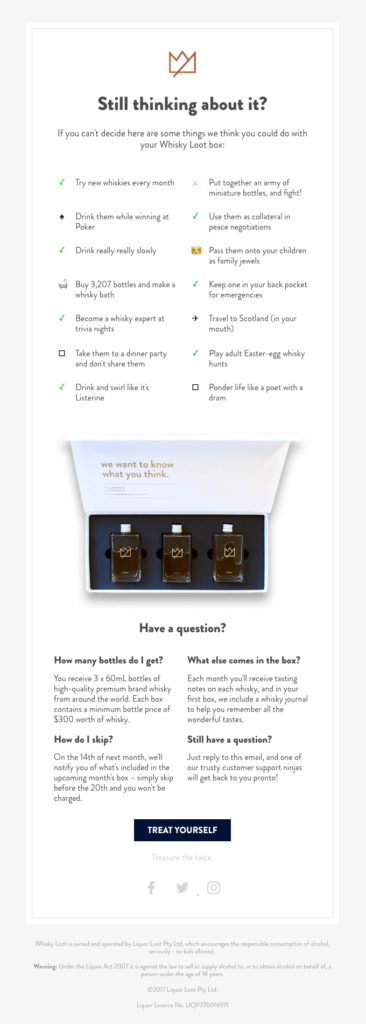
The brand stays true to its voice by sharing a lighthearted checklist of things customers can do with their product. The email also answers questions that might be holding up people from making the purchase.
This is a great tactic you can easily incorporate into your message. You can use some of the top questions you hear from people on your:
- Site
- Social media pages
- Surveys/research
Besides some of the top concerns — like shipping costs or returns — it can also help to include if you offer financing information for more expensive items. For example, if you provide 0% interest, include that in your abandoned cart email.
Big-ticket items require a significant commitment from an online shopper. These purchases are a big decision. It's your job to convince customers to trust in your brand, and the safety of financing without interest gives customers one less reason to bail out of the purchase. A large, “0% interest” banner is perfect for your price-conscious customers.
(Bonus: For expensive items, incentives like an offer or free gift are great ways of enticing the customer to complete their purchase — especially if that gift is an accessory matching the abandoned item.)
Also, make sure to give them contact information for your company if they have other questions, in case you didn’t cover theirs.
Call to action
Let them know exactly what you want them to do once they open your email (i.e. purchase the items in their cart). Do that by making the CTA prominent in your design. The components of a good CTA for an abandonment email are:
- Be direct (but nice). Your button could say “Return to your cart,” instead of using words like “buy” or “pay”
- Only include one CTA to make sure it’s clear what you want them to do (though there are a few exceptions to that rule, which we will cover later)
- Color/design of the CTA stands out from the rest of the email body
Here’s an example from Bearsville Soap Company that uses the “Return to your cart” CTA:

The CTA emphasizes how easily they can finish the checkout process they started, without being pushy. We also like the bear emoji in the subject line, which helps the message stand out and reinforce branding.
Frequency
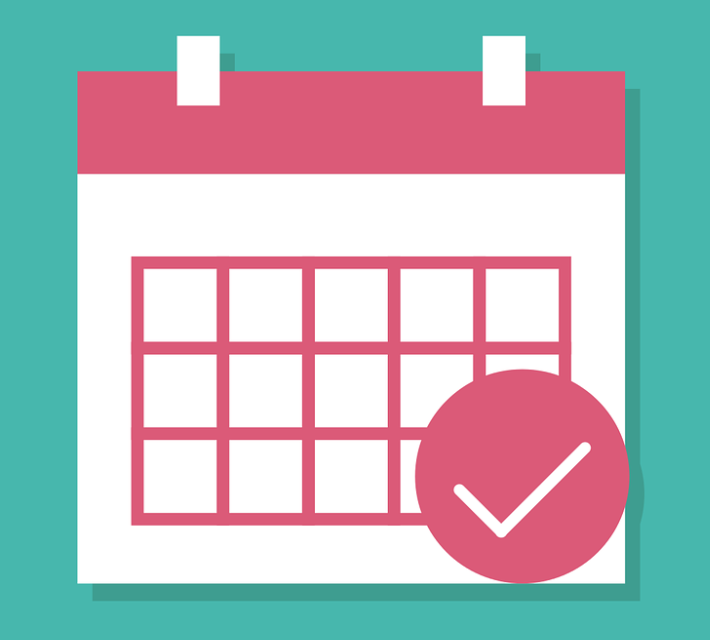
You can set up a series that goes out all on its own – and wins back revenue that would otherwise have disappeared. Like we mentioned above, you’ll want to send the first email fairly soon after they leave their cart. You should also continue to follow up with them using a series of emails if they don’t complete their purchase after the initial email.
This example sequence is one that many brands, including Target, use following a cart abandonment. It starts on Day 3:
-
- 3: Send first email with a subject line like “Come back and see what’s new,” with some sort of personalization at the front — “Kids’ Clothing: Come back & see what’s new”
- 4: Send a significant discount across the entire category the user was browsing. The offer should be front and center, placed directly in the subject line and as the first call out in the body of the email — “Need kid’s clothing? Take up to 25% off today”
- 4: A few hours after the first email is sent that day, send out another like “The price dropped for something in your cart”
- 5: Resend the notification regarding the price drop with an updated subject line — “Price drop alert”
- 6: If the previous attempts have failed, you can switch back to more category-specific offers. So, if they had originally added children’s clothing to their cart, you could try something like, “All of the outfits they’ll need for school.”
- 7: Pick out personalized products based on what’s in their cart. For example, if they added a boy’s sweater with a dinosaur on it, send them other clothing options that have dinosaurs on them with a subject line like, “Outfits he’ll roar about!”
As you can see, an abandoned cart email strategy includes way more than just one message. You want to use the information you have on them, like what they’re interested in, to provide the most targeted emails possible.
Here’s an example of an email series Wayfair sent after we added curtains to our cart:

They sent a total of five abandoned cart emails spanning nearly two months. These are the subject lines they used:
- CURTAINS you’ll love!!
- The curtain for you!
- CURTAINS & DRAPES: Living Room **SALE**
- ▓▓▓▓ CURTAINS & DRAPES ▓▓▓▓
- CURTAINS you’ll love!! [This one was sent at the beginning and end of their email series]
This is the email they ended the campaign with, which was similar to the first one we got:
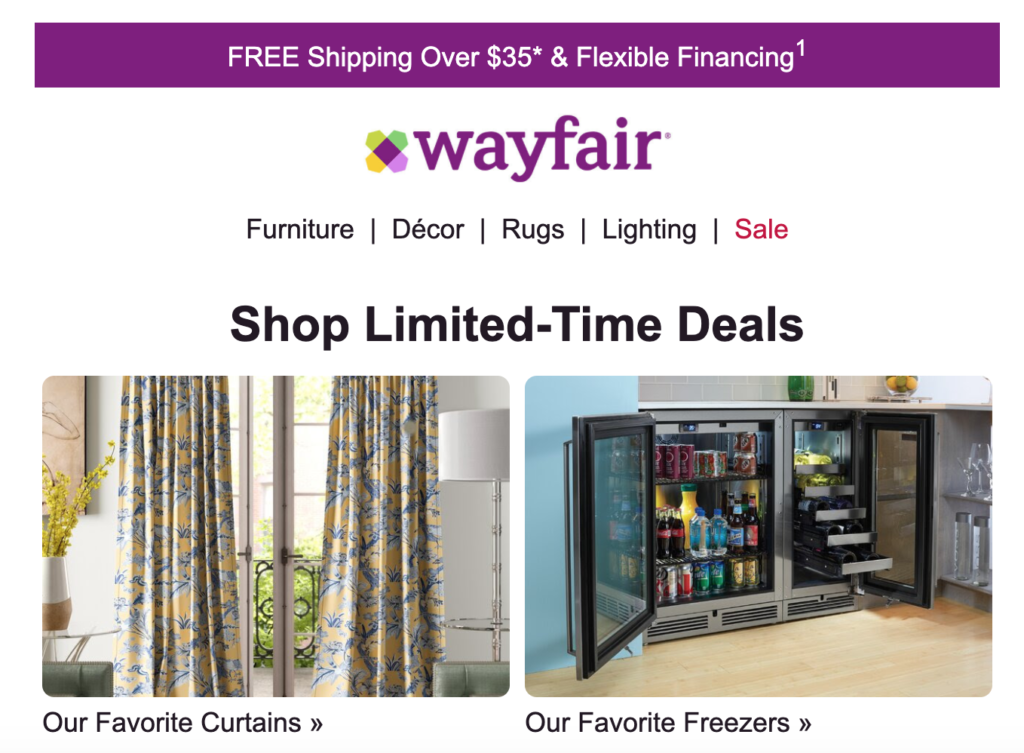
They not only showcased the product we had originally added to our cart (curtains), but they also included other popular home items.
Show proof
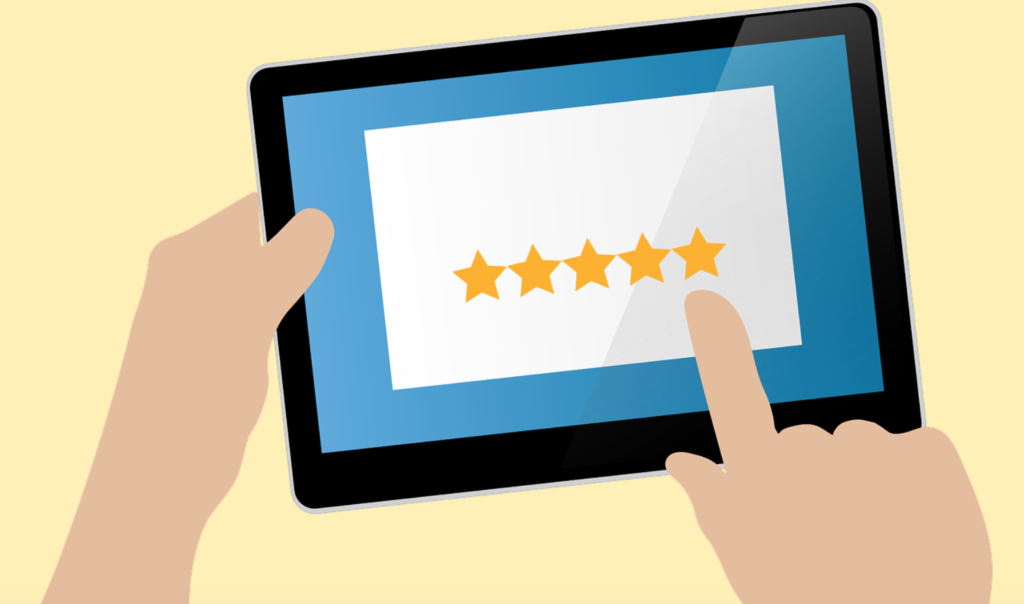
What do you do before making a purchase? We’d venture to say the vast majority of you look at reviews to see what others have to say about a product first. We all want to see that social proof, so use that to your brand’s advantage by including reviews in your abandoned cart emails.
Go through your reviews, and pull out the best ones for the product or service they’ve looked at. If you don’t have any, reach out to your top customers for one. The subject line could be:
- See what others are saying about [PRODUCT]
- Why this [PRODUCT] earned a 5-star review
- Our most talked about products
Unsubscribe
Like with any of your email marketing campaigns, you’ll need to include an Unsubscribe button or link somewhere in the body of your email. Make unsubscribing as easy as possible, so don’t try to hide it or make it super small.
It doesn’t help you or the shopper if they aren’t interested in receiving your emails, and they can always resubscribe later if they choose. If you try to force people into receiving your emails and buying your stuff, you’re destined for complaints, failures, and a struggle to maintain profitability. Let people opt-out before they start to distrust or dislike your brand.
An effective unsubscribe button usually is at the bottom of an email. That’s where readers will look. Try to use a different color, font, or even use italics to make an unsubscribe CTA stand out. You don't need to go overboard with font size. You can keep a smaller size font if you want, but make sure it’s readable.
In summary

Abandoned cart emails are about more than getting the shopper to complete their purchase. The email should also be helpful and answer questions so they can complete the purchase when they're ready.
Take this opportunity to create a lasting relationship with your customers and aim to convert your shopper into a loyal brand fan. You want them to become promoters of your business, not just a one-time customer.
While short-term profits from discounting and sales promotion are great, what happens when your promos run out and it’s just a regular day? If you have an effective email cart abandonment strategy in place, you won't have to worry about not having a sale to lure them in.
- You'll know your customers agree with the price you sell your products for.
- They'll be willing to purchase for the full price.
You’ve seen the stats, best practices, and tons of examples. You have power and knowledge. We’ve given you everything you need to make your abandoned cart emails the best they can be.
Remember...
Even if you follow these steps to a T, you might not be able to capture every single abandoned cart user. Not every shopper is serious about making a purchase, or maybe they are just comparing products.
Even if you don’t close every sale, you’re creating a solid foundation that will help the visitor learn about your brand, that you care about current/prospective customers, and make it easier for them to find your products if and when they decide to make a purchase.
It takes several interactions with a consumer before they ever convert, and abandoned cart emails are a great way to start engaging with them. So, it’s time to get started, and add them to your marketing strategy!
Getting customers to visit your site and place items in their cart is only half the battle. According to Baymard Institute, cart abandonment rates average around 70% on most e-commerce sites. Re-engaging even a fraction of these customers can drastically increase a business's revenue. Luckily, there are numerous straightforward ways shopping sites can reclaim abandoned cart revenue.
How to reclaim abandoned cart revenue

Personalized abandoned cart emails
Abandoned cart emails are nothing new; you’ve likely received these emails from Amazon and other e-commerce sites you frequent. However, many abandoned cart emails feel more like advertisements than personalized messages.
Personalized abandoned cart emails drastically improve revenue potential, especially those acknowledging your customers’ shopping habits. For example, triggered emails that recognize first-time shoppers may read differently than those sent to long-time customers. Emails sent to new buyers can offer introductory gifts or how-to guides, whereas those sent to long-time customers may provide benefits for their loyalty.
Engage anonymous cart abandoners
Reclaiming abandoned cart revenue gets trickier when you realize how many of your customers are unidentified. In some cases, these customers aren’t on your email list. In other cases, they’re on your email list but aren’t logged in.
Sending emails to unidentified customers can be challenging. Luckily, Retention.com’s CartID+ tool can use cookies to reach out to otherwise anonymous customers. CartID+ can even send abandoned cart emails to customers who haven’t opted into your newsletter.
SMS notifications
Emails aren’t the only way to get a customer’s attention; text messages can be a more engaging medium for retention marketing. Some sign up for website mailing lists using emails they’ve created to collect spam mail. Although abandoned cart emails aren’t spam, some of your contact attempts won’t be seen if you only use emails to engage cart abandoners.
SMS notifications can’t be flagged as spam and are more likely to be seen than emails. Additionally, some studies suggest mobile customers are more likely to abandon their carts than desktop users. Text messages are an ideal way to communicate with your mobile site users.
Learn more about your customers
Personalizing communication is an exercise in futility if you know nothing about your customers. Apps like Retention.com’s Enrich tool can provide valuable information about the people visiting your site. Learning more about your shoppers’ demographics and interests can enhance your email-campaigning efforts.
Knowing whether a customer has a kid, a pet, or a specific hobby will improve your site’s product recommendations. The Enrich tool, combined with your abandoned cart information, is vital to building a customer profile to enhance your triggered emails.
Offer discounts and alert customers when sales are live
Sometimes, people abandon their carts because they decide an item’s price is too high. Offering a discount can be an excellent way to reclaim abandoned cart revenue. As a matter of fact, some customers abandon their cart specifically because they think they’ll receive a discount.
Popular sites like LifeHacker teach customers to use cart abandonment as a method for buying products at a lower price. It isn’t uncommon for a customer to place a product in multiple carts across multiple sites and buy it from the one that sends them a coupon. Still, you don’t have to cut into your profits to engage customers.
Sites like Amazon observe products that customers leave in their carts and send them emails when they go on sale. This method lets you re-engage cart abandoners while making the most of your planned discount events.
Create a guest checkout page
Many customers abandon carts because they don’t want to waste time creating an account. Customer accounts are ideal for collecting emails, phone numbers, and addresses for future engagement campaigns. Still, customers who can’t buy your products without creating an account may choose to shop elsewhere. Guest checkout pages are a simple way to make it easier for customers to shop on your site.
Display shipping options on the product page
Some customers abandon their carts because the shipping costs catch them off guard. Some sales methodologies suggest obscuring a product’s price by hiding shipping costs until the customer is ready to check out. However, the modern consumer has grown tired of dishonest sales practices.
Although you may not be able to reduce shipping costs, being upfront about them can reduce your abandoned cart rates.
Stick with what works
There’s no such thing as a one-size-fits-all approach in retention marketing. You shouldn’t spend time on campaigns that you run blindly. Monitoring your engagement campaigns and investing more time and effort into the methods yielding the best results is essential.
If you’re considering an application or service to help you with customer retention, you should ensure it offers in-depth reporting. Retention.com tracks revenue and ROI weekly and monthly, making it easy to access your needed data. Additionally, Retention.com has valuable insights into the domains, landing pages, and times of day that generate the most emails.
What Is customer retention?

Customer retention refers to the number of people who make repeat purchases from a business. Growth hackers will tell you that by increasing customer retention rates, you can often increase your revenue faster.
The thing is, customer retention can be difficult for e-commerce businesses because there are so many alternatives available for consumers. However, a retention marketing plan can help you improve customer retention and increase your bottom line.
Without retention marketing, you're constantly prospecting for potential customers rather than focusing on building a loyal customer base. The truth is you need to do both, but many e-commerce businesses focus on the new consumer.
Here we discuss retention marketing and industry technology and offer five solutions to keep customers coming back.
What Is Retention Marketing?
Retention marketing focuses on engaging returning customers rather than targeting new ones. The goal is to increase customer loyalty by consistently giving them added value and more opportunities to purchase your products.
McKinsey Insights reports in 2022, more US consumers switched brands and retailers, looking for value. What's more, a little over a third of consumers opted to buy from private labels.
While your business needs new and returning customers, retention marketing will increase customers' lifetime value and long-term profitability.
Retention Marketing Tools
Retention marketing is about communication with your customers and using available technology to leverage data for actionable insights. Technology is a driver in retention marketing.
It leverages strategies to keep customers engaged and loyal to your brand based on relevant data. Real-time reporting tools provide deep insights into:
- Contacts
- Revenue
- ROI
- Trends
- Usage
Additionally, an integrated dashboard enables businesses to connect seamlessly to top email marketing applications, such as SalesForce and Marketo. Using technology to leverage insights and act on them is the foundation of customer retention.
5 Ways to Improve Customer Retention
If you want loyal customers, focus on building long-term relationships and delivering value throughout the customer journey.
1. Provide Friendly and Efficient Customer Support
Loyal customers spend more and will likely refer their friends and family to your brand. Reliable customer support is vital to building brand trust.
Today, customers expect to be able to reach customer support 24/7. Automation makes it possible to be there at all hours, and you can follow up if needed.
Provide customer service with easy access and accurate responses to solve customer issues. Listen and collect customer feedback. Then use it to improve customer experiences.
Nurturing customer relationships by providing ongoing service and support helps build lasting customer relationships that drive revenue.
2. Make it Personal
When your customers give social endorsements, it increases customer retention. Encourage current customers to share their thoughts on your product or service, or implement a refer-a-friend campaign encouraging customers to endorse your brand.
Communities increase customer retention. Share your vision, and talk about topics your customers are interested in that naturally relate to your products or services.
Retention marketing is all about knowing your customers. To that end, you can leverage customer data to understand their preferences and motivations. Customers will come back to make purchases if they're getting value from your brand.
Use the data to build buyer personas that represent the type of person who uses your product or service. Then create campaigns that add value for them.
3. Offer Loyalty Programs and Discounts
Loyalty programs reward your customers for buying your products and services. It can be anything from surprise swag to exclusive access that only loyal customers can purchase.
Loyalty programs and discounts show your repeat customers that you appreciate their business. Similarly, referral programs reward your customers when they send friends and family to your business.
E-commerce loyalty programs help brands build community and generate data to gain personalization insights. Consider implementing VIP benefits to increase customer lifetime value.
Social media contests encourage brand loyalty, build trust, and are a low-cost way to engage customers.
4. Dedicate More Attention to Email Campaigns
Email is an opt-in channel. Once they sign up, you can use customer emails to follow up, offer discounts, and find upsell opportunities.
To that end, it's essential to dedicate more attention to email campaigns to increase customer retention.
Email represents 50% of Latico Leathers' total revenue, and they wanted to dramatically increase their email list, drive a positive ROI, and maintain or increase their sending reputation. The company integrated Resolve with Klaviyo and experienced a 45% open rate from Resolve contacts.
You can customize email marketing campaigns and messaging for your audience. Analytics reveal which emails your customers open and don't open.
The data allows you to refine your email campaigns to suit your customers' preferences. Retention emails help build your email list, and you can segment it according to the most engaged to the least active recipients.
5. Re-engage Abandonment Revenue
First, use data analytics to measure your cart abandonment rate. If it's high, revisit your email marketing campaigns to determine why they don't resonate with your audience.
Cart abandonment could also be website related. For example, checkout may not be a user-friendly experience. Once you gather insights into why customers abandon their carts, you can set out to re-engage them.
Leverage industry-leading identity technology to increase cart abandonment revenue. For example, GetEmails enables businesses to send abandoned cart emails to users, even if they still need to opt into your newsletter.
Work With Retention Marketing Professionals
Retention.com specializes in retention marketing and e-commerce solutions, including cart abandonment and re-engaging potentially lost customers. We provide one-click integrations with leading marketing automation platforms.
Our dashboard features a user-friendly interface to easily connect to any email marketing application in under a minute. Retention's integrations automatically update and suppress contacts daily.
We can help you reclaim up to ten times more abandonment revenue by leveraging industry-leading Identity Resolution technology. When an unidentified customer abandons a cart, we identify them. Then a personalized flow automatically triggers in the messaging platform.
Scale up your abandonment flows and improve your retention marketing strategy. Get in touch with Retention.com today to find out how we can help.
7 out of 10 online shoppers abandon their carts, representing billions of dollars in lost revenue.
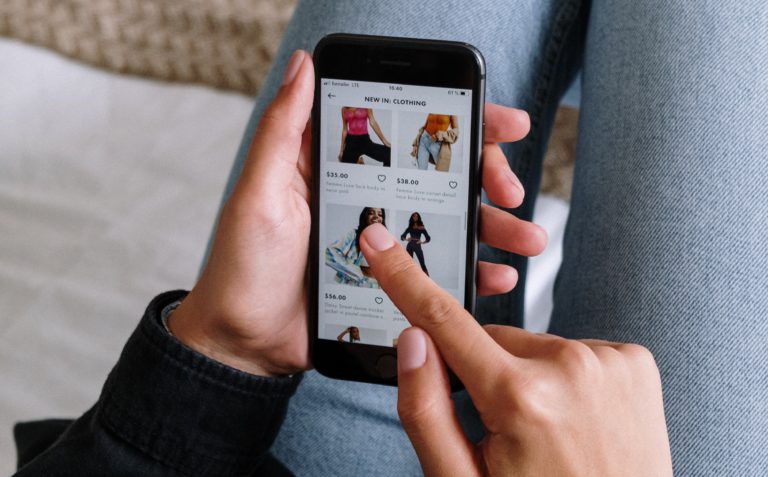
Imagine if you could instead reliably recoup even some of those lost sales.
Using retention marketing tactics, you can re-engage customers who have abandoned their carts and bring them back to your shop.
Read on to understand everything you need to start putting that lost revenue back in your pocket where it belongs.
What is Retention Marketing?

Retention marketing encourages customers to return to your website or store to make repeat purchases. It means focusing on the customer's experience and building brand loyalty to boost word-of-mouth advertising.
At its core, retention marketing means keeping the customers you already have and increasing their spending on future purchases.
Your business can utilize many effective retention marketing strategies, including reclaiming abandoned cart revenue.
The bottom line is to create engagement and loyalty in the customers you have already converted.
This loyalty also leads to reaching new customers or clients through word of mouth.
The Goal of Retention Marketing
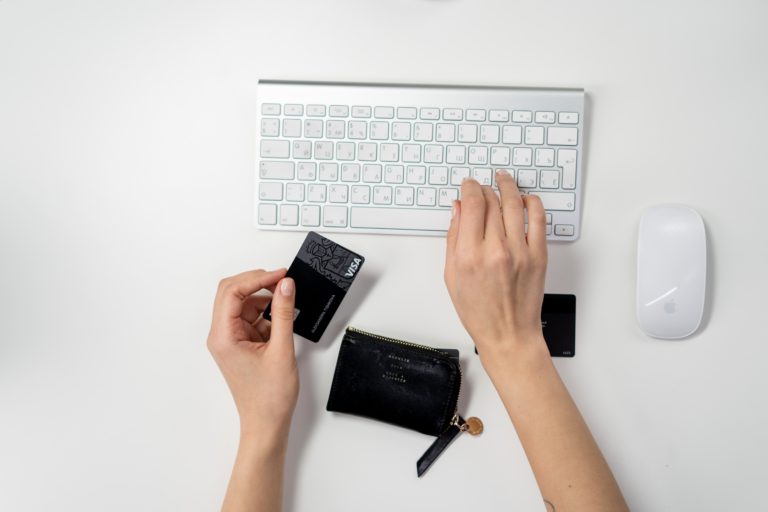
Retention marketing aims to keep customers engaged with your company and product to increase their lifetime value to your business. The end goal of retention marketing is to increase your profits. For example, in a recent article, American Express noted that it costs 6 to 7x more to get new customers than to retain old ones.
By changing the focus to keeping customers interested and engaged with your brand, you can spend less to make more profit in a shorter time.
Why is Retention Marketing Important?
Spending less on marketing while making more sales is a dream come true. This is why retention marketing is essential to any modern business.
In addition, advertising on every platform has become much more expensive. According to Digital Information World and Business Insider, we are seeing huge increases in social media marketing costs.
For example, Facebook ads rose 89%, while advertisements on YouTube now cost 108% more than last year.
Clearly, the cost of acquiring new customers is only going up, so retention marketing is becoming even more critical.
Benefits of Retention Marketing

There are many benefits to retention marketing.
One of the most significant benefits, besides the increase in profit margins, is that it increases the lifetime value of your customers.
Happy and loyal customers will buy more, come back more often and tell others about you.
When you make efforts to engage with old customers, they reward you with increased sales. As a result, you will have to spend less on advertising.
Challenges of Retention Marketing
Understanding your customer's wants and needs deeply enough that you can keep them happy and engaged takes some work.
Likewise, setting up the required metrics to accurately measure your campaigns' results can take time.
Making sure your customers have a positive experience with your brand takes time and effort.
Customer service can be expensive and hard to get right if customers have unrealistic expectations.
It can also be challenging to show customers over time that they are still appreciated.
Retention Marketing vs. Acquisition Marketing: What's the Difference?

Retention marketing and acquisition marketing are two very different types of marketing. They have different goals and employ different tactics.
Acquisition marketing is more direct and easier to measure.
In contrast, retention marketing is often concerned with subjects such as loyalty, which is more of an indirect result of many combined efforts.
Main Differences Between Retention and Acquisition Marketing
The most significant difference between these tactics is the type of customer they focus on.
Retention marketing focuses on customers you already have, while acquisition marketing focuses on getting new customers.
The actions taken in Retention marketing campaigns ensure that customers continue purchasing products in the long term.
Retention marketing tactics build loyalty and connection with your customers.
In contrast, acquisition marketing strategies focus on advertising to gain new customers.
How Should You Divide Your Marketing Spend Between Retention and Acquisition
Deciding how to divide your marketing budget between retention and acquisition depends on your current customer profile.
Brandalyzer does a great job of breaking down the mathematics of this complicated formula.
However, you can't go too far wrong if you spend 75% of your marketing budget on retention.
However much you decide to spend, it is clear that focusing more on retention than on acquisition will lead to greater success for your business.
Forbes recently conducted a study, and one of the notable findings was that merchants that spent more on retention in the last 1-3 years had close to a 200% more likelihood of being successful than their counterparts who spent more on acquisition.
Types of Retention Marketing
There are many types of retention marketing, and you can choose the tactics that resonate most with your business.
For example, an online coaching portal could send personalized messages to encourage clients through SMS messaging.
Here are some other types of retention marketing campaigns:
- Reactivation: Scooping up those customers who already showed interest and giving them a great experience with your brand is one of the best retention marketing tactics available.
- Simple Returns Policy: This makes people more likely to buy if their fear of being unable to make a return easily is removed with a simple, easy-to-find policy.
- Referral: Word of mouth is the least expensive and most profitable way to get new clients.
- SMS Marketing: The most personalized way to connect with your potential clients.
- Onboarding: Usually one of the first places to focus on.
- Subscriptions: This is the best way to automate repeat purchases.
- Content: Creating content around a great cause can help build loyalty with your customers when they see your values align with their own.
- Loyalty and Rewards: This is often the best way to get your audience to buy more frequently.
- Community: Building a community of people who share values and creating a sense of belonging with your customers will keep them loyal for a lifetime.
What Are the Most Effective Retention Marketing Tactics?
Retention marketing tactics don't have to be expensive. However, the most effective strategies are thoughtful to engage repeat customers.
Email marketing to recapture abandoned cart revenue is one of the most profitable and effective strategies.
According to the Harvard Business Review, It is best to concentrate on the initial experiences a customer has with you in your retention marketing efforts.
Focusing on the first purchase experience statistically brings the most ROI and should be taken care of first in a retention marketing campaign.
Personalization as an Effective Retention Marketing Campaign
Personalization can be used to enhance any of the other highly effective tactics mentioned above. You can employ personalization as a tactic through the many stages of the customer's journey.
Personalization as a retention marketing strategy has been shown to increase the number of customers a business gains and their lifetime value to you.
This personalization tactic provides valuable content across channels like email, social media, or even (SMS) text messages!
Which Retention Marketing Tactics are Right for Your Business?
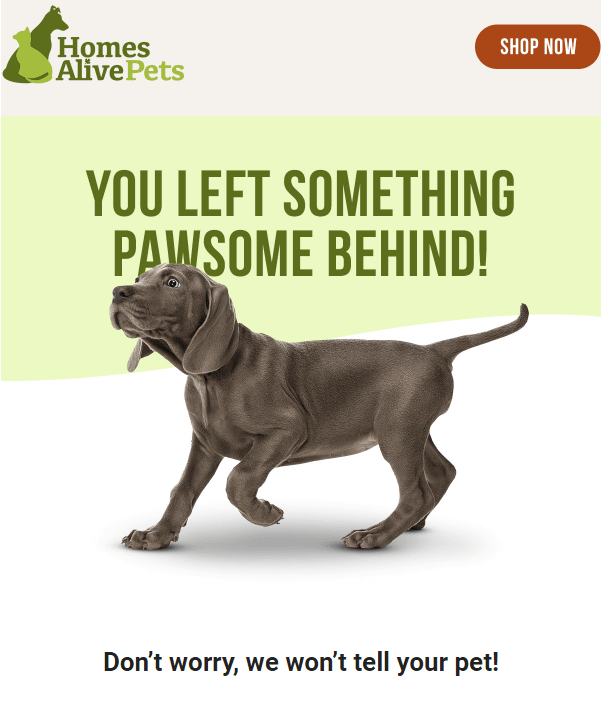
Finding the right tactics for your business can depend on your niche. Make data-driven decisions to decide on the best customer retention strategy.
First, find the right tools and formulas and measure your customer's data.
Then find out what successful metrics are for your business.
Looking at what successful metrics are for your industry is an effective way to begin. Then measure your customer data.
With the data in hand, you can see where you fall short. This will empower you to create the best retention marketing tactics for your business.
How to Create an Effective Retention Marketing Strategy
Decide what tactics will bring you the most profit and quickest returns. Target these first to create an effective retention marketing strategy.
Using the right tools is integral to creating an effective retention strategy. They will help you determine your goals and inform your strategy.
For example, if you recognize that you have a lot of dead emails on your list and want to bring these lost customers back, you can utilize Retention.Com's Reactivate campaign. This can help you increase your email opening rate from 2-3% all the way up to 40%.
What Tools Should be Implemented?
Having Customer Retention Management tools and identity resolution software can make all the data about your customer base easily accessible.
Another way to increase customer satisfaction while gathering data about them is to install a chatbot on your website.
When you have the information you need about your customers, it is much easier to tailor content for them.
Steps to Creating Your Retention Marketing Strategy
To create an effective retention marketing strategy, we recommend the following steps:
- Determine your churn rate.
- Make a User Journey Map.
- Focus on the first purchase experience and onboarding to begin.
- Use behavior analysis tools.
- Create personalized customer communications using data.
- Implement an easy way to collect feedback from your customers.
It is a great idea to concentrate first on the projects that will give you the most significant return and then go to the less profitable but still rewarding projects. For example, focus on the first purchase.
How to Measure the Success of Your Retention Marketing Efforts
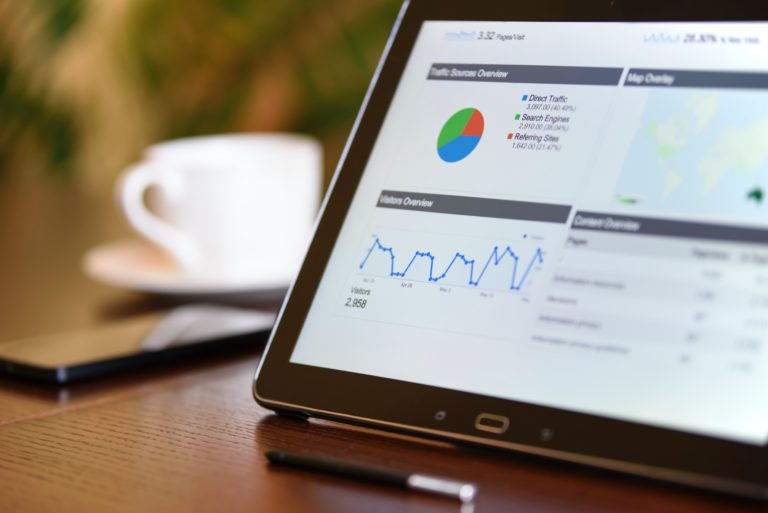
Measuring the success of your marketing efforts with cutting-edge tools that give you accurate data will bring you the most accurate results.
Use mathematical formulas that allow you to accurately pinpoint your statistics.
You can find many of these on the Appcues Blog, where they explain the different statistics you can measure along with the formulas.
For example, churn rate = (number of customers at the end of the year - new customers)/number of customers at the beginning of the year.
Here are some of the ways you can measure your success with your retention marketing efforts:
- Churn rate - monthly, quarterly, or yearly
- Average session duration
- Active users-weekly, monthly, daily
- Monthly recurring revenue and revenue churn rate
- Engagement Rate
- Reactivation rate
- Customer lifetime value
- Cumulative revenue
- Customer Satisfaction rate
- Net promoter score
- Renewal rate- for subscription services
Why are Success Measurements Important?
Peter Drucker, the first thought leader in business management, famously said, "If you can't measure it, you can't improve it."
To guide your strategy, measure which tactics work best with your customers. This way, you can direct your budget to the most effective campaigns.
The Best Success Measurements for Retention Marketing
In retention marketing, some of the most profitable success measures are product return rate, ROI, revenue and customer churn, customer lifetime value, repeat purchase ratio, and time between purchases.
It is best to find the measures that mean success for your niche. For example, in some niches, buying only one or two products in a lifetime is common.
Comparing the repeat purchase ratio for that business to the ratio desirable for most stores would create unrealistic expectations.
Finding out what metrics are considered successful for your niche is worthwhile.
Tools to Measure the Results of Your Campaign
Every website needs tools that measure your marketing data. These tools will let you know the ROI of your retention efforts.
Some of the essential tools are Google Analytics and Retention.com.
Combining these two tools will give you the information you need to gather the statistics to measure your retention marketing efforts.
For example, with Retention.Com, you can measure and keep track of your cart abandonment rate and the abandoned cart recovery rate.
On your Retention.com dashboard, you get real-time reporting. For example, you can easily see your revenue and ROI tracking and how many people have added to the cart, all in one place.
Re-engage with Your Customers and Reclaim Abandoned Cart Revenue
Now that you know how to start measuring your data and how you can utilize retention marketing to 5- 10x your current profit margins, nothing can stop you!
If you're still unsure how to re-engage with your customers and reclaim those abandoned carts, then book a demo with Retention.com. We can show you how easy it is.
